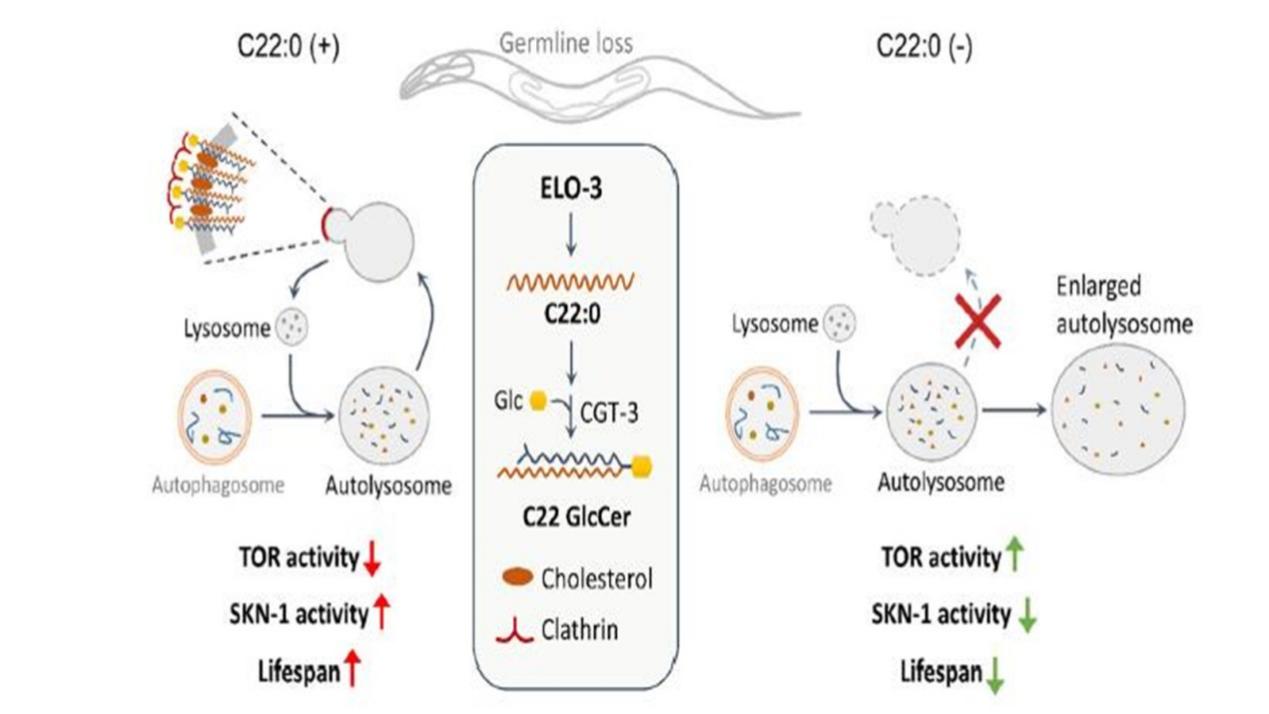On August 20, 2021, the research team led by Professor Pang Shanshan and Associate Prof. Tang Haiqing of the School of Life Sciences, Chongqing University published a research paper titled Saturated very long chain fatty acid configures glycosphingolipid for lysosome homeostasis in long-lived C. elegans in Nature Communications (IF=14.919, a sub-journal of Nature). In this paper, a new membrane lipid molecule promoting longevity is reported and its molecular mechanism is explained.
Aging is a part of the course for every living creature, and is also a risk factor that would lead to a number of chronic diseases. As such, understanding the molecular mechanism of aging is not only of great basic scientific significance, but also provides a theoretical basis for the realization of healthy aging. Membrane lipid is the main component of biofilm and is also one of the most diverse biological macromolecules in cells. Its main function is to provide a barrier for cells and organelles. However, the role of membrane lipids in aging regulation is not yet clear, and there have been very few reports on molecular regulation mechanism.

During the study, the research group found that the fatty acid elongation enzyme gene elo-3 was a new life regulating gene. Through a variety of biochemical, genetic and cell biological means, it was proved that elo-3 catalyzed the formation of behenic acid and further integrated into the membrane lipid glucose ceramide as a fatty acid chain to generate the final long-lived membrane lipid molecule C22 GlcCer. In further research of mechanism, the research group found that clathrin and lysosomal homeostasis mediated the life-span regulation function of C22 GlcCer through high-throughput RNAi screening. C22 GlcCer was able to stabilize the membrane localization of clathrin, ensure lysosomal regeneration and homeostasis, inhibit lysosomal TOR signal, and finally activate long-lived transcription factor SKN-1 and prolong people’s life.

In this study, researchers found a new aging regulation membrane lipid molecule C22 GlcCer, which brought new content to the metabolic basis of aging, and provided new ideas for the study of the physiological function of membrane lipids. Pang Shanshan and Tang Haiqing are the corresponding co-authors of the paper. Postgraduate students Wang Feng and Dai Yuxi are both first authors of the paper.
The research group led by Pang Shanshan/Tang Haiqing has been focusing on the research of membrane lipid homeostasis and aging regulation in recent years. Their recent research work has also revealed the relationship between membrane lipid phosphatidylcholine PC and aging related phenotypes. PC was able to regulate life span through calcium signal and affect cell survival during DNA damage by regulating protein homeostasis stress.
Link of the paper: http://www.nature.com/articles/s41467-021-25398-6.pdf
